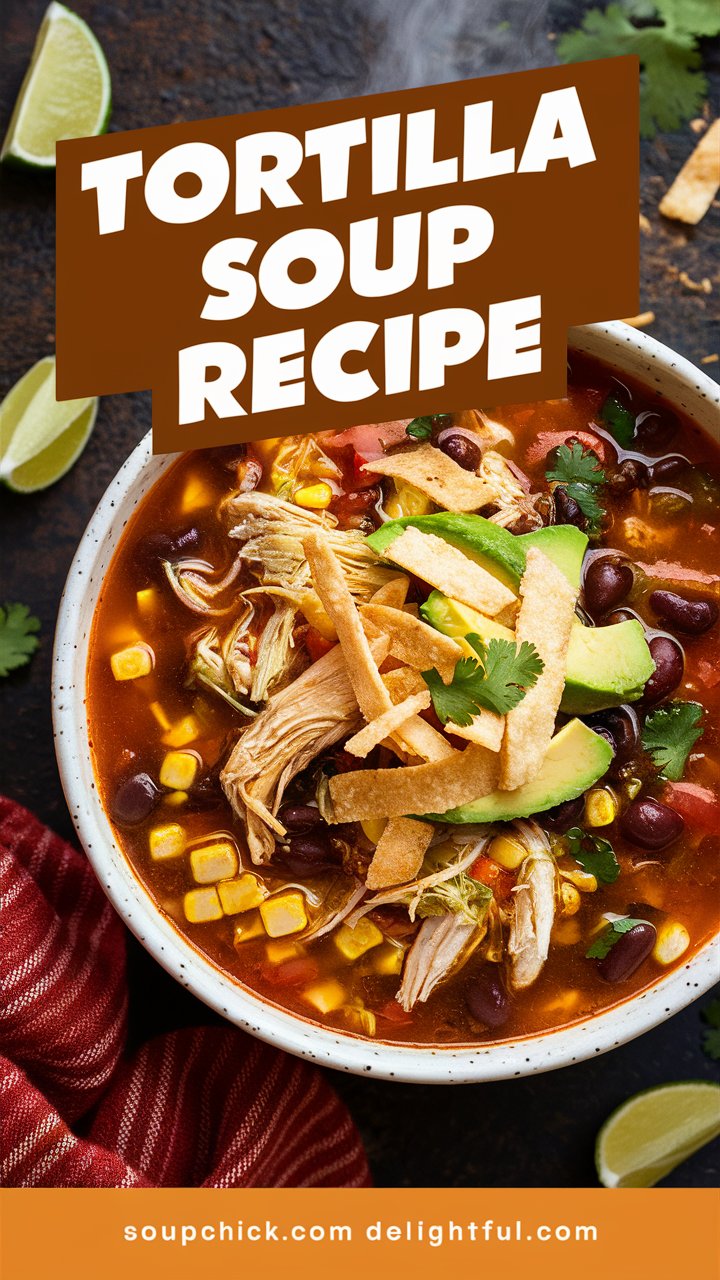Food is more than sustenance—it’s memory, history, and identity. Among the most beloved Mexican comfort foods, tortilla soup (sopa de tortilla or sopa Azteca) stands out. Its name is deceptively simple, but its roots stretch deep into Mexican culture. Why do they call it tortilla soup? The answer lies not just in crispy strips of corn tortillas, but in centuries of tradition, creativity, and respect for one of Mexico’s most iconic foods: maize.
This article explores the name, origin, ingredients, cooking process, cultural meaning, health benefits, and modern variations of tortilla soup. By the end, you’ll understand why this dish is more than a recipe—it’s a celebration of Mexican heritage.
The Name Explained: Why “Tortilla” Soup?
The defining feature of tortilla soup is the crispy tortilla strips that rest on its surface or soak gently into the broth. These golden strips do more than garnish; they represent the soul of the dish. Corn tortillas, made from masa harina (corn dough), are sliced, fried, or baked until crisp, then layered into a smoky tomato-chile broth.
Without tortillas, it’s just a flavored broth. With them, it becomes tortilla soup—a dish with texture, substance, and character. The name is an homage to this humble yet essential ingredient.
Historical Roots: From Aztec Tables to Modern Kitchens
The Maize Legacy
Corn, or maize, is sacred in Mexican culture. For the Aztecs and Mayans, it wasn’t merely food but a life source. Myths describe humans as being created from corn, underscoring its spiritual weight.
Tortilla soup’s origins tie into this reverence. By centering corn tortillas in the dish, Mexican cooks turned leftover food into a culturally symbolic and flavorful meal.
Central Mexico: The Birthplace of Sopa de Tortilla
The dish is believed to have originated in Central Mexico, especially around Mexico City, a region known for culinary diversity. Local cooks combined indigenous ingredients—corn, tomatoes, chiles—with Spanish influences like broth-based soups. The result was a dish both practical and celebratory.
Originally, tortilla soup was a resourceful way to use day-old tortillas. Instead of discarding them, cooks fried them, then enriched a broth with chiles, tomatoes, and aromatics. This thriftiness transformed scraps into tradition.
The Essential Ingredients: Building Flavor and Texture
1. Corn Tortillas – The Star Ingredient
- Fried or baked into strips.
- Provide crunch, texture, and cultural identity.
2. Tomatoes – The Flavor Base
- Roasted or fresh, blended into broth.
- Add acidity and natural sweetness.
3. Chiles – The Smoky Depth
- Common: pasilla, ancho, chipotle.
- Provide heat, earthiness, and smokiness.
4. Onion & Garlic – The Aromatic Core
- Create depth and balance acidity.
- Used as sautéed base in nearly all variations.
5. Broth – The Heartbeat
- Chicken broth (traditional) or vegetable broth (vegetarian).
- Unites flavors into harmony.
6. Toppings – Personalization
- Avocado slices
- Queso fresco or Cotija cheese
- Mexican crema or sour cream
- Fresh cilantro
- Lime wedges
Each topping adds dimension, making every bowl customizable.
Step-by-Step Guide: How to Make Authentic Tortilla Soup
Step 1: Prepare the Tortilla Strips
Cut corn tortillas into thin strips. Fry in oil until golden or bake at 350°F (175°C) until crisp.
Step 2: Toast and Soak the Chiles
Lightly toast dried chiles in a skillet. Soak in hot water for 10 minutes.
Step 3: Blend the Base
Blend roasted tomatoes, soaked chiles, garlic, and onion into a smooth paste.
Step 4: Build the Broth
Cook the paste in a pot with oil until fragrant. Add broth and simmer for 25–30 minutes.
Step 5: Serve with Garnishes
Ladle into bowls, top with tortilla strips, avocado, cheese, crema, and lime.
The Cultural Symbolism of Tortillas in Mexican Cuisine
Tortillas are more than food—they symbolize continuity, resilience, and community. From Aztec rituals to modern kitchens, tortillas remain central to Mexican daily life. In tortilla soup, they are celebrated not as side items but as protagonists.
This dish also embodies Mexican resourcefulness—transforming leftovers into treasures. It tells a story of sustainability long before “food waste reduction” became a global conversation.
Nutritional Benefits: A Healthy Comfort Food
- Rich in Vitamins → Tomatoes and chiles bring vitamin C, A, and antioxidants.
- Healthy Fats → Avocado and crema supply monounsaturated fats.
- High Fiber → Corn tortillas aid digestion and satiety.
- Low-Calorie Option → Baked tortillas + lean broth keep it light.
Modern Variations of Tortilla Soup
- Chicken Tortilla Soup – Protein-packed with shredded chicken.
- Vegetarian Tortilla Soup – With beans, zucchini, corn, or mushrooms.
- Spicy Tortilla Soup – Uses jalapeños or chipotle for extra heat.
- Creamy Tortilla Soup – Blended with cream or cheese for richness.
Common Questions About Tortilla Soup
Q1: Can I make it ahead?
Yes, but keep tortilla strips separate to stay crispy.
Q2: Is tortilla soup gluten-free?
Yes, since corn tortillas are naturally gluten-free. Just check broth labels.
Q3: How do I keep tortilla strips crunchy?
Add them right before serving and serve hot.
Tortilla Soup Around the World
While deeply Mexican, tortilla soup has gained popularity globally. In the U.S., Tex-Mex versions often include black beans, corn, and more cheese. Gourmet chefs experiment with fusion toppings like roasted poblano crema or charred vegetables.
This evolution shows tortilla soup’s adaptability—it honors tradition while welcoming creativity.
Conclusion: A Bowl of Heritage and Flavor
So, why do they call it tortilla soup? Because tortillas are not just an ingredient—they are the heart, history, and identity of the dish. This soup represents Mexico’s ingenuity: humble corn transformed into a comforting, iconic meal.
Each spoonful carries centuries of tradition, blending indigenous flavors with modern adaptations. Whether you enjoy it simple, spicy, or creamy, tortilla soup is more than food—it’s a cultural journey.
